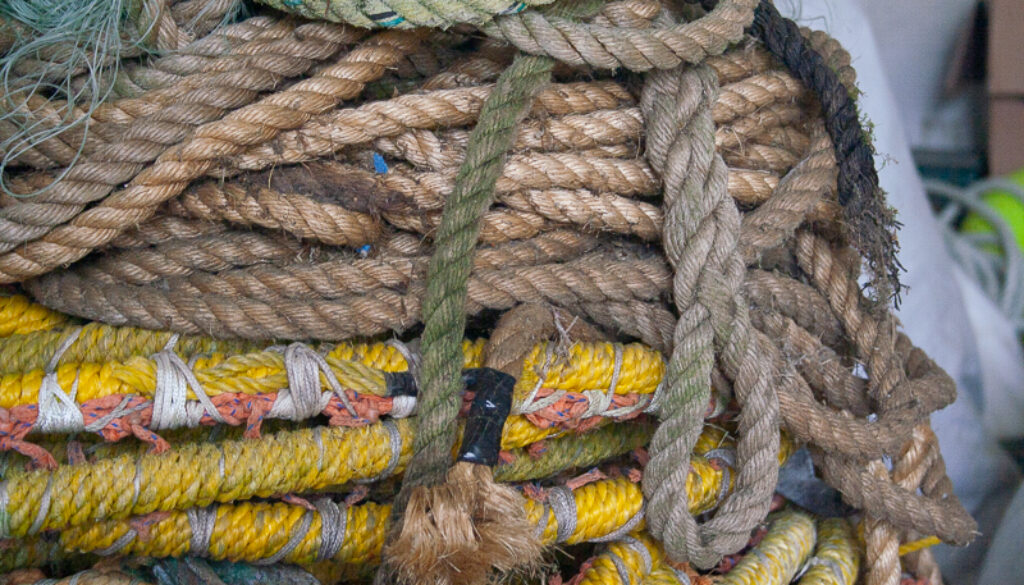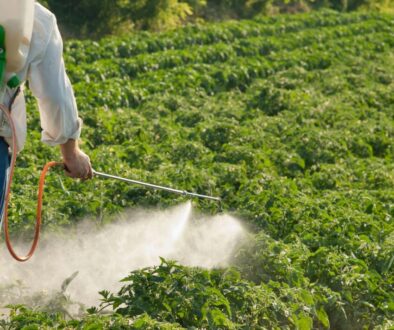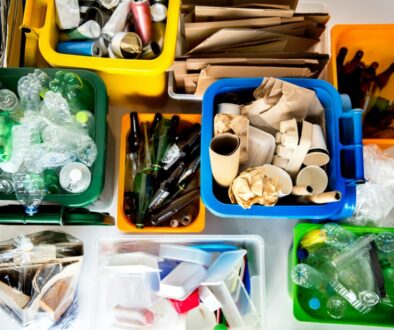New life for fishing gear aims to help address ocean plastic pollution
By Lena Beck
On the shores of southwest Washington state, little pieces of thick yellow rope sometimes wash ashore among tangles of seaweed and broken shells.
Ordinarily, these types of rope – fragments of line used in shellfish farming – simply add to the estimated 14 million tons of plastic pollution that circulate through the world’s oceans each year, harming a wide spectrum of delicate marine life as the plastics slowly break down into smaller pieces. Or they pile up in landfills.
But increasingly, networks of individuals and organizations, including nonprofits, academics, and corporations, are working to interrupt that pollution cycle through a range of innovative efforts that is part of a broader movement around the world aimed at addressing ocean plastics.
In one example of those efforts, a fishing gear recycling company called Net Your Problem recently worked with the Ocean Legacy Foundation and the Washington Sea Grant research institute to give new life to those old fishing lines washing ashore. Shredded ropes were turned into tiny plastic pellets, which were then molded into tools for measuring crabs during harvest by students at Western Washington University (WWU).
“Better than putting it in the landfill,” Washington-based commercial fisherman Mark Casto said of his separate effort to work with Net Your Problem to recycle 13,420 pounds of line from his operation, which harvests king crab, snow crab and salmon from Alaska.
Marine debris
Commercial fishing is a global industry. In 2018, 96.4 million tonnes of wild fish were caught worldwide — a record high. In 2020, US commercial fishing brought in $4.8 billion, depending largely on crabs, lobsters, salmon, shrimp and scallops.
To do this work, commercial fishermen use gear like longlines and gillnets that have been made from plastic since the mid-20th century. Virgin plastic, a byproduct of natural gas or crude oil, is a strong material that requires a lot of energy to produce and takes hundreds of years to break down.
But while the plastic lasts a long time, the fishing gear doesn’t. The lifespan of commercial fishing gear varies, with gillnet fishermen in Bristol Bay, Alaska going through multiple nets in a six-week season and some longlines and trawl nets lasting up to seven years. Eventually, though, the result is always the same – holes and tears become unpatchable and the gear must be retired.
Despite being largely made from recyclable plastics, it is estimated that only 1.5% of fishing gear actually gets recycled after it becomes unusable. Approximately 2% of gear ends up in the ocean annually – a marine debris catastrophe. The rest either takes up space in storage or in landfills, largely due to lack of access to recycling facilities.
As the world grapples with abundant plastic debris, a host of academics, fishermen and entrepreneurs are re-imagining options for end-of-life fishing gear.
Ghost nets
John Misasi, a professor at WWU, leads students in projects to transform end-of-life fishing gear. He receives retired fishing nets from Net Your Problem founder Nicole Baker, who collects the gear from individual fishermen and companies. For Misasi’s undergraduate engineering students, these unusable nets are full of potential. The shellfish line-to-crab gauges project was one product of this partnership.
“That is a nice, circular story for keeping fishing gear in the fishing industry,” Misasi said.
But other projects at WWU and companies around the world focus on moving old fishing gear to entirely different industries.
Los Angeles, California-based Bureo turns old fishing nets into an array of products ranging from skateboards to Jenga towers to Patagonia hat brims. Norway-based Nofir collects “ghost nets” — fishing gear lost or discarded into the ocean – and turns them into nylon yarn. Ghost nets are estimated to make up at least 10% of marine litter.
WWU also partners with an organization called the Ocean Plastics Recovery Project (OPR), which collects plastic that washes ashore in Alaska. Using the materials provided by OPR and Net Your Problem, Misasi’s students have started working with the technology company HP Inc.
HP states on its website that it is using recycled ocean plastics in more than 50 HP products, from laptops to monitors to cases. The company says that programs to divert ocean-bound plastics have kept more than 1.8 million pounds of plastic materials, roughly equivalent to 65 million bottles, out of the environment.
“HP is very interested in getting ocean plastic as well as end-of-life fishing gear into their product lines, to basically get recycled plastic at higher concentrations into the electronics industry,” Misasi said.
In some of Misasi’s classes, students tackle specific problems that could get in the way of using retired fishing nets in electronics — things like how to more effectively clean the discarded gear, or how to better separate the materials.
Many fishing ropes actually contain multiple different types of plastic that are bound or woven together to bolster their strength. But in the recycling process, says Misasi, this mingling presents as contamination. It’s one of the biggest obstacles to recycling plastics from industrial gear like fishing nets.
“Most plastics aren’t actually that compatible with one another,” Misasi said. “If you try and mix them together, you get a really poor mixture — like oil and water.”
But easier methods for separating the plastic elements within the gear could open up more pathways for recycling it, said Misasi, whose classes are working on ways to isolate gear made from mixed materials.
Access issues
Access to waste management infrastructure remains another barrier to recycling gear as it reaches the end of its life. As a result, Baker has designed her business to divert such materials away from the landfill. In the Net Your Problem warehouse in Seattle and other facilities, Baker accumulates netting and line until there is enough to send to programs like Misasi’s at WWU, or to fill a shipping container to send to recycling facilities.
“It’s not like the facilities exist everywhere for people to participate in,” Baker said. “You can’t just put this in your blue bin at the end of your driveway. So if we are not somewhere with a collection program, people don’t have the option to participate.”
Baker’s business has evolved since its inception, but her general strategy of acting as the link between fishermen and the recycling facilities remains the same. In September at the Port of Seattle, Baker and a group of approximately 25 American Seafoods employees and partners gathered at Terminal 91 around a large commercial fishing net. Pulled from end to end, this net stretched more than 1000 meters and weighed over 20,000 pounds. People clustered in different sections of the net, meticulously cutting it into segments and pulling it apart by hand so that the plastic could be sorted and recycled.
Baker hopes to service as many top US commercial fishing ports as possible. Right now, her business works in three of the top 10.
“We’re just trying to figure out, what are other cities or ports that have a lot of fishing gear waste in them,” Baker said. “And that’s where we need to be.”
(Featured image: A pile of retired fishing gear sitting in the Net Your Problem warehouse in Seattle, WA. Photo credit: Lena Beck.)




